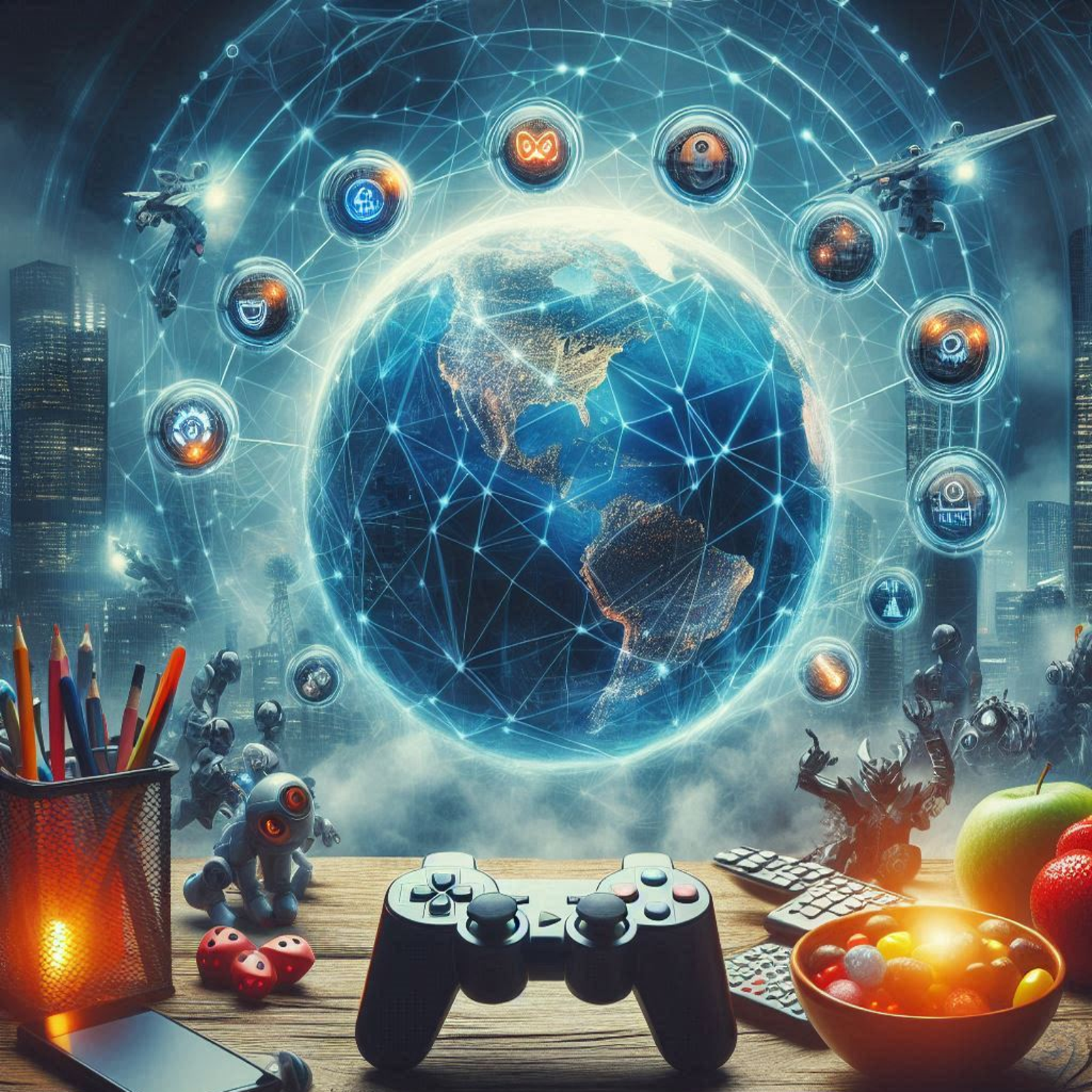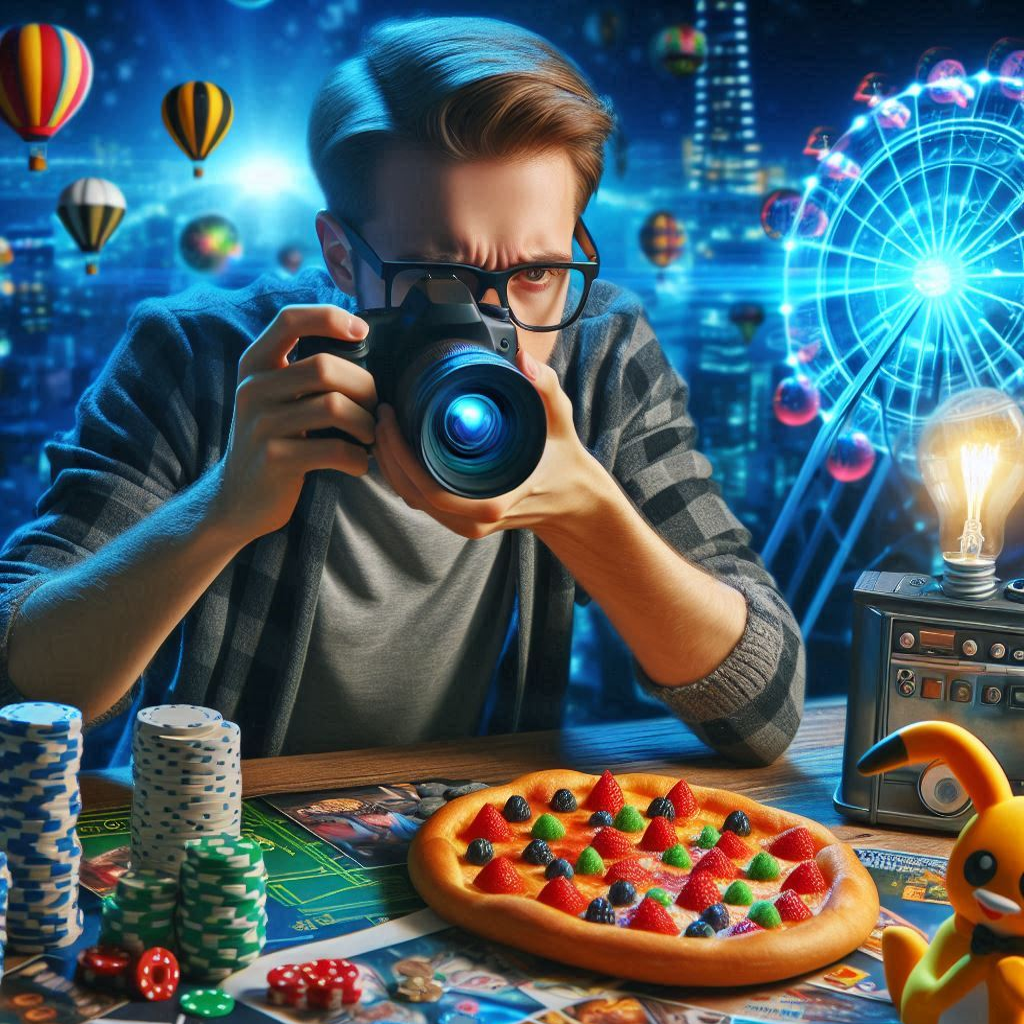Gamification is a cool way of using game-like elements in everyday activities to make them more fun and engaging. Think about earning points or badges for doing your homework or for exercising. This idea started with video games but has grown into something much bigger. In the future, games will change how we work, learn, and even shop!
One important term to know is “gamification.” This is when game design elements, like rewards or competition, are added to non-game areas like schools or businesses to motivate people. Another key term is “engagement,” which means how much people want to participate in something. When people are more engaged, they tend to do better.
As technology gets better, we can expect to see more creative ways to use gamification. For example, imagine if doctors used a game to help patients stick to their treatment. Or schools might have projects that let kids earn points for helping friends and learning new skills. These games could make boring tasks feel exciting and enjoyable!
In conclusion, the evolution of gamification will bring changes that can help us in many areas, from education to health. By using ideas from games, we can turn everyday tasks into fun challenges that keep us excited and motivated.
The Evolution of Gamification
Gamification is a term that combines game mechanics with non-gaming activities. It aims to enhance user engagement and motivation in various fields like education, business, and health. As games continue to evolve, so does the application of gamification in everyday life. Let’s explore how future games will shape non-gaming sectors.
Understanding Key Terms
- Gamification: The use of game design elements in non-game contexts to encourage desired behaviors.
- Game Mechanics: Elements of games such as points, badges, and leaderboards that make activities more engaging.
- User Engagement: The emotional commitment of a user to a product or service.
- Behavioral Motivation: The psychological drive that compels a person to take action.
Impact of Gamification on Various Sectors
As gamification becomes more mainstream, its impact on various sectors is undeniable. Below are some of the most significant areas affected by this trend:
1. Education
Gamification has significantly transformed the educational landscape. By incorporating game mechanics into learning environments, educators can foster a more engaging and interactive experience. For example:
- Point Systems: Schools can implement point systems for attendance, participation, and completing assignments, motivating students to earn more points.
- Badges: Achievements are recognized through digital badges, encouraging students to strive for excellence.
- Leaderboards: Competitive elements can stimulate students to perform better academically.
“Gamification is one of the best methods of promoting learning and engagement in students of all ages.”
2. Business
Businesses are increasingly using gamification to boost employee performance and customer engagement. Here’s how:
- Employee Training: Companies can create training programs that utilize gaming elements, making learning opportunities more enjoyable.
- Sales Competitions: Organizations often introduce competitions where employees earn rewards for meeting targets, which enhances motivation.
“Gamification in the workplace not only engages employees but also fosters a sense of collaboration and team spirit.”
3. Health and Fitness
Gamification is prevalent in health and fitness applications, helping individuals maintain a healthy lifestyle:
- Fitness Apps: Many apps incorporate challenges, rewards, and social sharing to motivate users to reach their fitness goals.
- Health Trackers: Devices that track steps, calories, and progress often offer badges or levels that encourage further activity.
The Future of Gamification
The advancement of technology will only enhance the effectiveness of gamification across non-gaming sectors. Virtual reality (VR) and augmented reality (AR) are already changing how gamification is applied. Here are some predicted trends:
| Increased Personalization | Gamification will become more tailored to individual user preferences and behaviors. |
| AI Integration | Artificial intelligence will analyze user data to create adaptive gamified experiences. |
| Cross-Platform Gaming | Gamification will be accessible across multiple devices, increasing user participation. |
Challenges and Solutions
While the benefits of gamification are evident, there are challenges to consider:
- User Fatigue: Overuse of gamification can lead to boredom. To combat this, organizations should regularly refresh their systems with new challenges and rewards.
- Data Privacy: Collecting user data for gamification raises privacy concerns. Transparent data policies and user consent can mitigate these risks.
Final Thoughts
Gamification is a powerful tool that shapes various sectors by enhancing user engagement and motivation. As technology continues to evolve, so will the strategies employed in gamification. It’s an exciting time to observe how these game elements will integrate into our daily lives, encouraging us to achieve goals in education, business, health, and beyond.
What is gamification?
Gamification is the integration of game mechanics and elements into non-gaming contexts to enhance user engagement, motivation, and overall experience. It leverages the principles of game design to make activities more enjoyable and rewarding.
How is gamification evolving in the gaming industry?
The gaming industry is constantly innovating, introducing new technologies and methodologies that influence gamification strategies. As games get more immersive with advancements in virtual reality, artificial intelligence, and mobile applications, elements from these games are being used to transform how users interact with various non-gaming sectors.
What are some applications of gamification outside of gaming?
Gamification is being implemented in various sectors such as education, healthcare, marketing, and employee training. For instance, educational platforms use gamified quizzes to enhance learning engagement, while health apps may incorporate challenges and rewards to encourage users to maintain a healthier lifestyle.
How will future games influence non-gaming sectors?
Future games are likely to introduce more nuanced feedback systems, immersive storytelling, and adaptive learning experiences. These advancements can be applied in non-gaming sectors to create personalized experiences, increase user retention, and foster community through competitive and cooperative challenges.
What challenges might arise with the increasing use of gamification?
While gamification can drive engagement, it can also lead to issues such as over-reliance on rewards or potential burnout from competitive environments. It is important for organizations to find a balance between game elements and intrinsic motivation, ensuring that the experience remains enriching rather than trivializing the activity.
Can gamification improve productivity in the workplace?
Yes, gamification can improve workplace productivity by making tasks more engaging and rewarding. By incorporating elements like goal-setting, progress tracking, and recognition systems, employees are often more motivated to perform their tasks efficiently and seek collaborative opportunities.
Are there any specific examples of successful gamification in action?
Many companies have successfully used gamification strategies. For example, fitness apps that track workouts and offer rewards for milestones have seen increased user engagement. Similarly, companies that use leaderboards and point systems in sales competitions can motivate employees to exceed their targets.
What skills will be important for developing gamification strategies in the future?
As gamification continues to evolve, skills in user experience design, data analysis, and storytelling will become increasingly important. Understanding behavioral psychology and how to effectively incorporate game mechanics into workflow processes will also be vital for creating impactful gamified experiences.



